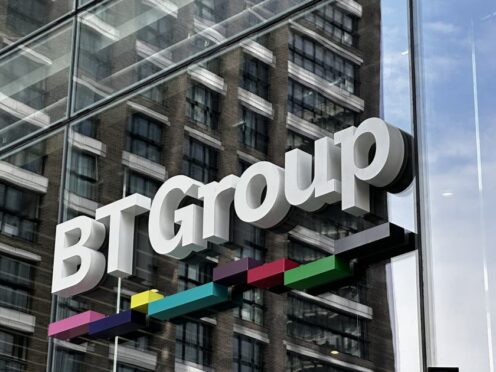
BT has significantly delayed its timetable to force all customers on to the new digital network following long-running concerns about vulnerable customers who rely on landline-based personal alarms.
The group, which is also responsible for EE customers, has abandoned the industry’s previous timeline of completing the national switchover by the end of next year.
It has announced it is now aiming to have moved all customers over by the end of January 2027.
Network operators including Openreach and CityFibre had already committed to ensuring that those who rely on telecare alarm systems – emergency buttons which automatically call the emergency services when pressed via a user’s landline – are not left without a working device during the migration.
Almost two million people use the alarms in the UK.
The telecoms industry is currently upgrading landline services to new digital technology using an internet connection, such as Voice over Internet Protocol (VoIP), Digital Voice or All-IP telephony.
While telecare systems do work with digital landlines, a power cut or internet drop-out can cause them to fail, while copper phone lines typically continue to work even during power cuts.
In December, telecoms firms including Virgin Media O2 and BT agreed to pause forcing customers on to the new digital phone network following a number of “serious incidents” involving the failure of personal telecare alarms.
BT said its “revised” timetable followed the introduction of a series of improvements to the programme to better protect vulnerable customers and those with additional needs, including telecare users.
It has, however, re-started switching “zero-use” landline customers who have a broadband connection to its Digital Voice landline service.
It said BT Consumer customers – except landline-only customers, those who use telecare or who have additional needs – would be contacted and offered the chance to switch to a digital landline provided over full fibre broadband, where available.
Howard Watson, chief security and networks officer at BT Group, said: “The urgency for switching customers onto digital services grows by the day because the 40-year-old analogue landline technology is increasingly fragile.
“Managing customer migrations from analogue to digital as quickly and smoothly as possible, while making the necessary provisions for those customers with additional needs, including telecare users, is critically important.
“Our priority remains doing this safely and the work we’re doing with our peers, local authorities, telecare providers and key Government organisations is key. But more needs to be done and we need all local authorities and telecare providers to share with us the phone lines where they know there’s a telecare user.”
Which? director of policy and advocacy Rocio Concha said: “Vulnerable people must be protected during BT’s digital migration, including ensuring that telecare users and those who rely on their landline will always be able to contact emergency services when they need to.
“The transition to digital landlines is necessary and offers advantages but it’s essential no one gets left behind. The government and Ofcom must be prepared to take tough action if firms fail to live up to their responsibilities to customers.”

Enjoy the convenience of having The Sunday Post delivered as a digital ePaper straight to your smartphone, tablet or computer.
Subscribe for only £5.49 a month and enjoy all the benefits of the printed paper as a digital replica.
Subscribe